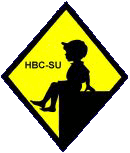
There are a wide range of activities conducted at school, both inside and outside the classroom. Many of these activities required a specaialized uniform or sports gear. English schools, especially the private schools probably had more elaborate uniforms and specialized schoolwear than any other country. The school regulations varies over time and among the many different types of schools. Many schools had a dress uniform worn on Sunday or special school events. During regular school days a less elaborate uniform was worn. At some schools boys would come to schools in their blazers, but just wear their jumpers while in class. Some class room activities like art or science might require some sort of protective gear. Quite a number of schools sponsored youth group units such as Scouts. Some secondary schools had Cadet units. Many schools had a gym uniform. There was a variety of specialized uniform for various team sports.
Schools had different uniforms which in part affected the uniforms worn for various activities. These alternatives includung the dress, traveling, and regular class room uniform wore for everyday school activities. Differences varies. Sometines the dress uniform was just wearing a white rather than a grey shirt. At other schools there were suits rther thn blzers. The traveling uniform was often the drrss uniform. Although in recent years the children might wear casual outfits for school trips. This variesd ftom dchool yo dchool. This all could vary seasonally. The type odf school was also a factor. Children at day schools were more likely to wear a dress uniform as they were coming back and forth to school every day. Also boarding schools had different rules about what the children wore after school in the evening. At some schools they wore the regular uniform in the evening. At others they changed into their ordinary clothes.
English school children engaged in a wide range of asctivities from coming to school in the morning to going to returning home in the afternoon. The hear of any school was the classriom and acdemic work, biut schools also iffered the children many different activites. This varied widely from school to school. Schools had an everyday uniform for most activities. There were special uniforns for certain ctivities, primarily gym and games (sports), but there were a rnge of uniform rules for vsriou sctivitis. But there were many different uniform rules at different schools affecting what was worn for the different sctivities. Boarding school children were involved ineven more sctivities, including prep, games, free time, and going to bed at night. The activity included both normal living activities like meals and going back and forth to home as well as academic school acivities. There wre also a range of leisure activities, sports and arts, as well as activities with academic value.
Related Chronolgy Pages in the Boys' Historical Web Site
[Main Chronology Page]
[The 1880s]
[The 1930s]
[The 1940s]
[The 1950s]
[The 1960s]
[The 1970s]
[The 1980s]
Related Style Pages in the Boys' Historical Web Site
[Long pants suits]
[Short pants suits]
[Socks]
[Eton suits]
[Jacket and trousers]
[Blazer
[School sandals]
Navigate the Boys' Historical Clothing School Uniform Pages
[Return to the Main English school page]
[Return to the Main country school activity page]
[Return to the Main school page]
[Australia]
[France]
[Germany]
[Italy]
[Japan]
[New Zealand]
[Scotland]
[United States]
Navigate the Boys' Historical Clothing Web Page
[Activities]
[Chronology]
[Clothing styles]
[Countries]
[Debate]
[Economics]
[Garment]
[Gender]
[Hair]
[History]
[Home trends]
[Literary characters]
[School types]
[Significance]
[Transport and travel
[Uniform regulations]
[Year level]
[Other topics]
[Images]
[Links]
[Registration]
[Tools]
[Return to the Historic Boys' School Home]
